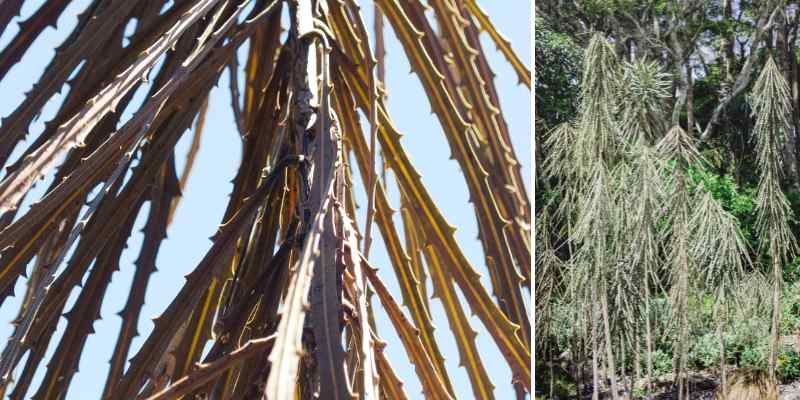Pseudopanax, also called "five-finger tree", is a genus of ornamental plant native to New Zealand, prized for its unique, decorative foliage. If you like this plant and want more in your garden or to share with friends, propagation is an excellent way to achieve that. Discover all our tips to succeed with propagation by cuttings or sowing of Pseudopanax!
To learn all about cultivation of Pseudopanax, read the dedicated plant fact sheet.

Why propagate Pseudopanax?
Propagating your Pseudopanax allows you to:
- Create new plants for free.
- Share your plants with other gardeners or friends.
- Renew and rejuvenate mature plants that may be losing vigour.
- Increase garden density with a plant you particularly appreciate.
When to propagate Pseudopanax?
- In spring and until early summer for propagation by cuttings: plant is in active growth and new roots develop more easily.
- Sowing can be done year-round indoors.
Required equipment
- Sharp, clean pruning shear (disinfected with alcohol to avoid spreading disease)
- Rooting activator (facultative)
- Light potting mix: blend of compost, sand and perlite or a special potting compost for sowing and propagation by cuttings
- Small pot
- Clear plastic bag or mini-greenhouse
- Spray bottle
How to take cuttings of Pseudopanax
Propagation by cuttings is the quickest and simplest method.
- Select a healthy, semi-lignified stem (still flexible) 10–15 cm long with several leaves. Be careful to choose a stem with adult leaves.
- Use pruning shear to cut just below a node (where a leaf attaches to the stem). Remove lower leaves, leaving only a few at the top to reduce water loss through evapotranspiration.
- You can dip the base of the cutting in rooting activator to encourage root development. This is not obligatory but increases chances of success.
- Plant the cutting in a light, free-draining potting mix. Insert it about 3–4 cm deep.
- Cover the pot with a clear plastic bag (or place it in a mini-greenhouse) to maintain a humid environment. Cuttings have best chance of success at around 20 °C.
- Place the pot in a bright spot, out of direct sun. Keep the substrate slightly moist, but not waterlogged. Mist with water if needed.
- Rooting can take 4 to 8 weeks. You will know the cutting has taken when new leaves appear or you feel resistance when gently tugging the stem.
- Young cuttings are sensitive to temperature fluctuations. Keep them away from cold draughts.
Good to know! Some Pseudopanax, such as Pseudopanax ferox and Pseudopanax crassifolius, do not ramify during their juvenile phase; in that case avoid taking cuttings from these species at that stage. Wait until they are adult and then take semi-lignified lateral branches.

How to sow Pseudopanax seeds?
Sowing is relatively slow and yields unpredictable results.
- If your Pseudopanax produces fruits (berries), collect the seeds from inside.
- Clean seeds to remove all pulp, then leave to dry a few days in the open air.
- Sow seeds in a tray in a light potting mix (half compost, half sand), water well and place away from light in a warm spot (around 20–25 °C).
- Pot up when seedlings have at least two true leaves (after cotyledons).
- Germination can take several weeks or even several months. Be patient!
































Comments